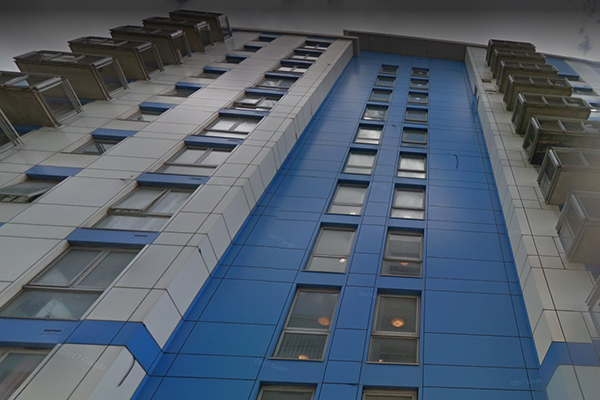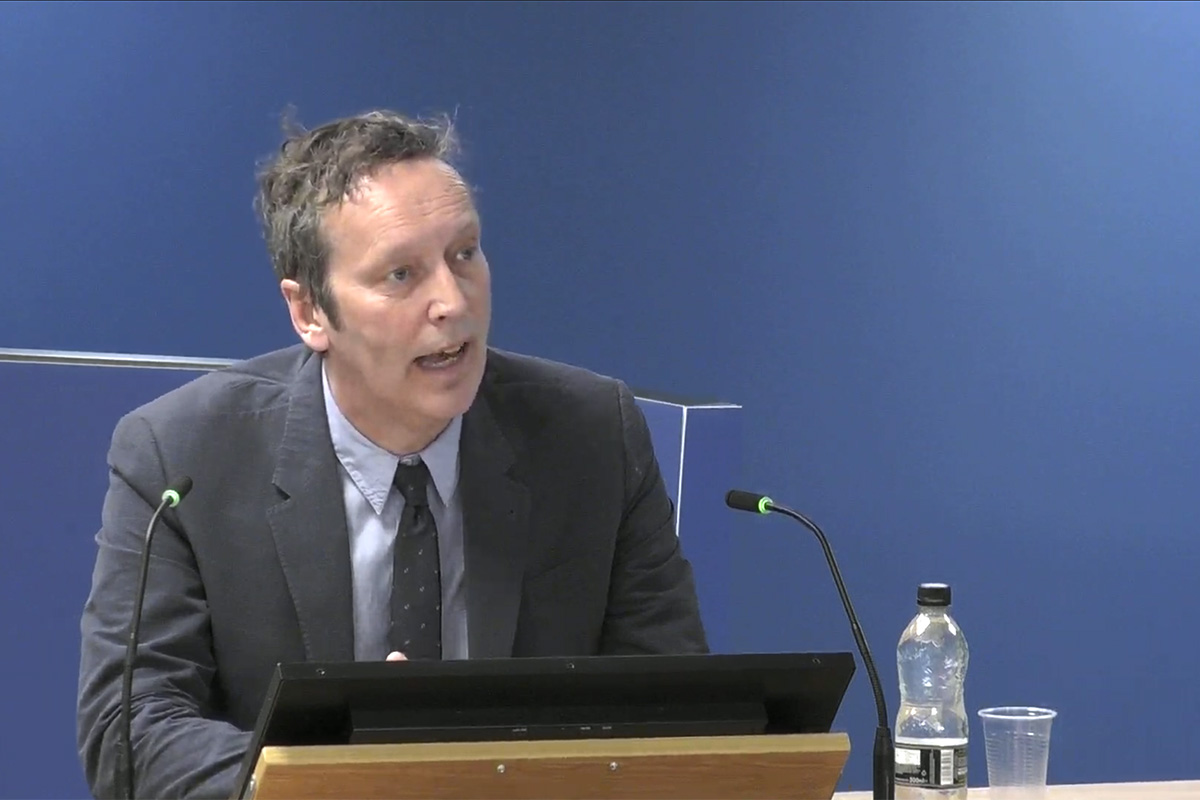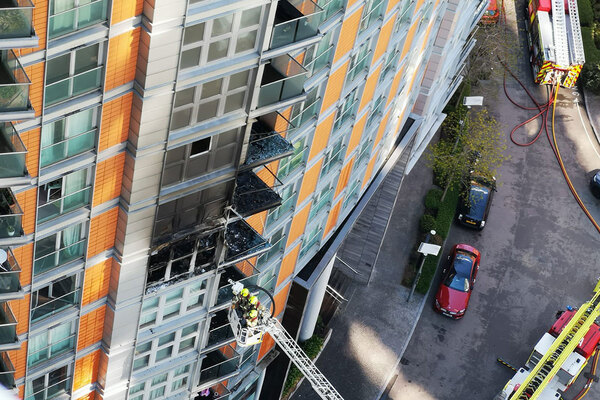‘Competent’ contractor would have known Grenfell cladding was unsafe, says expert
A “reasonably competent” cladding contractor should have known that the combustible panels used on Grenfell were unsafe for high rises, a cladding expert told the inquiry today.
Jonathan Sakula, a facade expert with 45 years’ experience in the industry, said that a string of cladding fires in the Middle East from 2012 to 2016 should have alerted those working in the industry to the potential dangers of using aluminium composite material (ACM) cladding.
However, he also criticised official government guidance that he said “allowed” the use of the dangerous product so long as it possessed a ‘Class 0’ fire rating.
He said in his report that using the product on a high rise was “unwise” given the “known combustibility”, and that failing to consider this combustibility “would fall below the standard expected of a reasonably competent practitioner in the cladding industry”.
“This would apply even more so to a situation where such materials were being proposed as a cost saving measure, where it would be essential to verify whether the cheaper product would perform adequately by comparison with the product for which it was being substituted,” he said.
“In your report, you’ve said that a reasonably competent cladding contractor would have considered the combustibility of ACM,” said Kate Grange QC, counsel to the inquiry, today.
“In fact, would a reasonably competent cladding contractor have gone further and concluded that ACM [with a polyethylene core] was unsafe to use on high-rise buildings?”
“Yes,” replied Mr Sakula.
Mr Sakula said today that ‘Approved Document B’ – the official government guidance on fire safety – “allowed” the use of the panels in instances where it had been tested to a standard known as Class 0.
In his report, he said that despite other guidance suggesting higher standards were appropriate "in my opinion [cladding contractors] would nevertheless have deferred to the guidance given in Approved Document B".
"Therefore, while ADB2 section 12 remained unchanged, and was silent about the use of [ACM], a cladding contractor would have interpreted this that the use of [ACM] was still allowed," he wrote.
Grenfell Tower was initially set to be clad in a zinc material that was far less combustible, but this was switched to cheaper ACM in 2014 as Kensington and Chelsea Tenant Management Organisation (KCTMO) and lead contractor Rydon sought to reduce the cost of the job.
Detailed design of the cladding system was then sub-contracted to specialist firm Harley Facades, which raised no concerns about the use of the product.
The contract for the refurbishment of the tower made specific reference to non-government guidance which required the use of materials which required that materials in the "building envelope shall not be composed of materials which readily support combustion".
Mr Sakula agreed that this should have "overridden" any lower standards in official guidance and precluded the use of ACM at Grenfell.
However, he was also critical of government, saying that the time lag in updating Approved Document B “was getting unreasonable” by 2017 and that it did not properly take into account ‘composite’ materials like ACM, which have a non-combustible surface but an extremely combustible core.
The government had been told to review this guidance “with particular regard to external fire spread” in 2013 by the coroner investigating the 2009 Lakanal House fire, which killed six. This had not been done by the time of the Grenfell Tower fire.
The government has claimed since the fire that its guidance actually required cladding panels to meet the higher standard of ‘limited combustibility’, which is applied to insulation products.
This was due to a reference to the word ‘filler’ in a later part of the guidance, which the government has claimed applied to the inner core of the product. Mr Sakula said he did not accept this interpretation today.
“I’m aware of the fact that the Ministry of Local Government [sic] issued some post-Grenfell information which seemed to imply that filler included the core of an ACM panel. Frankly I don’t agree with that. I just think that was a bit of a stretch,” he said.
The cladding panel used at Grenfell Tower – Reynobond 55 with a polyethylene core – was advertised as meeting Class 0, and had a certificate from the British Board of Agrement (BBA) that appeared on its face to confirm this.
But the inquiry has previously revealed that the Class 0 tests supporting this certificate had in fact been carried out on a more fire-retardant version of the cladding panel and the material used on Grenfell Tower was never tested to Class 0.
Mr Sakula said he would have expected the cladding contractor to have relied on the BBA certificate “to a great extent” as the BBA was a “reputable body” and its statements were “to be trusted”.
However he said a reasonably competent contractor would have had somebody with the technical knowledge to read the certificate in detail and understand the limits of its application.
He said a string of fires from 2012 should also have alerted the industry to the dangers of using combustible cladding products, particularly ACM.
But he added that since these fires were mostly non-fatal, the warnings were not taken as seriously as they should have been.
“I think one of the problems was there was not a great loss of life in these fires and perhaps people didn’t take them seriously enough,” he said. “It was a failure of imagination, and there was a bit of an attitude that it hasn’t happened so it can’t happen.”
Asked about the division of responsibility between an architect, in this instance Studio E – which selected the products and produced initial designs – and the specialist contractor, in this instance Harley, Mr Sakula said both were responsible.
“The specialist contractor would take it that the architect had done a reasonable job in producing a design that was technically sound and compliant, [but] on the other hand the sub-contractor takes on the responsibility and therefore also had to satisfy themselves that this was the case,” he said.
Mr Sakula’s evidence related mostly to an earlier section of the inquiry dealing with the actions of the team refurbishing the tower. He gave evidence today due to the delay in finding an appropriate expert to advise on this topic.
The inquiry continues tomorrow, when it will return to evidence from KCTMO, the tower’s management company.
Sign up for our weekly Grenfell Inquiry newsletter
Each week we send out a newsletter rounding up the key news from the Grenfell Inquiry, along with the headlines from the week
Already have an account? Click here to manage your newsletters













